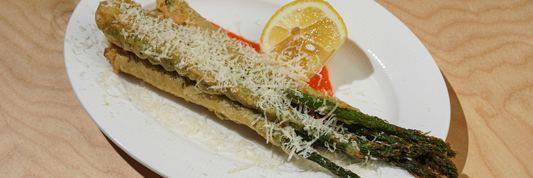Coffee is one of the most beloved beverages worldwide, and its diversity is as rich as its flavor. Understanding the different coffee varieties can help you appreciate the unique characteristics of each bean, from where it is grown to how it tastes. In this article, we’ll explore the most popular coffee varieties, their distinct features, and what makes each one special.
-
Understanding the Brix Coffee: Definition, Importance, and Benefits
-
Coffee Harvesting: When and How is Coffee Harvested?
-
Types of Common Coffee Bags? Dimension Chart of Size Coffee Bags
Why Understanding Coffee Varieties Matters

Coffee is more than just a morning ritual; it’s a complex and diverse world that many people enjoy without fully understanding. The vast array of coffee varieties is influenced by numerous factors, each contributing to the flavor, aroma, and overall experience of what we sip. Whether you’re a casual drinker or a dedicated coffee enthusiast, knowing about these varieties can significantly enhance your appreciation and enjoyment of your favorite brew.
Understanding coffee varieties is essential because each type offers something unique in terms of taste and experience. From the bean type to its origin and processing methods, these factors can drastically alter the final cup. By exploring the diversity in coffee, you can better select options that align with your personal preferences and explore new flavors you might have yet to encounter.
The Major Coffee Species: Laying the Foundation
Arabica
Arabica, known scientifically as Coffea arabica, is the most widely cultivated coffee species globally, making up about 60-70% of the world's coffee production. It is cherished for its smooth, aromatic flavor profile, often characterized by hints of sweetness and a more complex taste. Arabica is typically grown at higher altitudes, around 2,000 to 6,000 feet, where the cool climate allows for a slower maturation process, enhancing its flavor
Despite its popularity, Arabica beans have lower caffeine content compared to other species, particularly Robusta. They are also more susceptible to diseases and pests, which can affect crop yield and quality. Notably, Arabica has numerous sub-varietals, such as Typica and Bourbon, each with distinct characteristics.
Often considered the "premium" coffee bean, Arabica dominates the specialty coffee market, appealing to coffee aficionados who seek quality and complexity in their brews.
Robusta
Robusta, or Coffea canephora, is the second most popular coffee species. It presents a stronger, more bitter flavor that many find distinctive. Robusta beans have a higher caffeine content, making them a robust option for those who appreciate a more intense experience. They are also more resilient and easier to grow than Arabica, thriving in lower altitudes and hotter climates, which contributes to their affordability.
Robusta's unique qualities make it a favorite for espresso blends due to its ability to produce a rich crema. The beans are naturally more resistant to pests and diseases, resulting in less reliance on chemical treatments during cultivation.
The higher chlorogenic acid content in Robusta contributes to its bitterness and potential health benefits, such as antioxidative properties. Robusta plays a significant role in the production of instant coffee and traditional espresso blends, making it an essential player in the coffee industry.
Other Notable Species (Brief Overview)
- Liberica: Known for its distinct smoky and woody flavor, Liberica offers a unique profile that sets it apart from both Arabica and Robusta.
- Excelsa: A lesser-known variety, Excelsa is characterized by its unique tart and fruity notes, adding complexity to certain blends.

Delving Deeper: Key Factors That Define Coffee Varieties
Bean Variety (Cultivar): The Genetic Blueprint
Within each coffee species are cultivars that serve as the genetic blueprint for flavor, aroma, and growth characteristics. Within Arabica, notable cultivars include:
- Typica: Known for its balanced flavor profile with bright acidity.
- Bourbon: Often sweeter, with a rich and complex taste.
- Geisha: Famous for its floral and jasmine-like notes, albeit more challenging to grow.
- Pacamara: A hybrid known for its large beans and fruity flavor.
Robusta cultivars, while less diverse, include Canephora, which are typically hardier and suited for a range of growing conditions.
Origin and Terroir: The Influence of Place
Geographical location, climate, soil quality, and altitude play crucial roles in shaping coffee flavor. The concept of "terroir," borrowed from wine, emphasizes how these factors contribute to unique coffee profiles. Here are a few renowned coffee-growing regions and their typical flavor characteristics:
- Ethiopian Yirgacheffe: Known for its floral and citrusy taste, often accompanied by a tea-like body.
- Colombian Supremo: Renowned for its balanced, nutty profile with a smooth finish.
- Sumatran Mandheling: Offers earthy and bold flavors, characterized by low acidity and a full body.
Each region produces coffees that reflect the conditions in which they were grown, making origin an integral part of the coffee experience.

Processing Methods: Transforming the Bean
Processing methods can significantly influence the final flavor of the coffee. The main processes include:
- Washed (Wet Process): This method emphasizes clarity and acidity, resulting in a cleaner taste profile. The process involves removing the cherry's outer fruit before fermentation.
- Natural (Dry Process): In this method, the cherries are dried with the fruit still intact, leading to fruitier and sweeter notes as the sugars are absorbed by the beans.
- Honey Process: A hybrid of the two, this method retains some mucilage while being dried, balancing between the clarity of washed and the sweetness of natural coffee.
Each processing method creates a distinct signature that can enhance or mute the flavor characteristics associated with specific coffee varieties.
Understanding the breadth of coffee varieties opens up a rich tapestry of flavors waiting to be explored. With every cup, there’s an opportunity to experience something unique and delightful.
As you delve into the world of coffee, consider trying various species and origins to discover your personal favorite—and perhaps share your newly found preferences with fellow coffee lovers.
What to Expect from Different Varieties

Arabica Flavor Descriptors:
Arabica coffee beans are renowned for their complex flavor profiles that can range widely, often characterized by delicate and nuanced notes. Common flavor descriptors include:
- Floral: Often associated with beans from regions like Ethiopia, particularly Yirgacheffe, which is celebrated for its jasmine and lavender undertones.
- Fruity: Arabica can present a delightful array of fruity flavors, from berries to citrus. A classic example would be a Kenyan coffee that often showcases vibrant berry notes.
- Chocolatey: Many Arabica varieties also exhibit rich chocolate flavors, especially those grown in Central and South America, such as coffees from Colombia.
- Nutty: A subtle nuttiness can be detected in beans from Brazil, providing a smooth and comforting element to the cup.
- Caramel: A creamy, sweet note reminiscent of caramel can often be found in lighter roast Arabica coffees, particularly from regions like Costa Rica.
Robusta Flavor Descriptors:
Robusta coffee beans present a stark contrast to Arabica, with their own distinctive flavor profile that typically leans toward stronger and more robust notes. Common descriptors include:
- Bold: Robusta is often characterized by a bold, intense flavor that can be even more pronounced than that of its Arabica counterpart.
- Bitter: A more bitter taste is inherent to Robusta, adding depth to its profile.
- Rubbery: Some describe Robusta's taste as having rubbery or earthy qualities, which can be more pronounced in lower-quality beans.
- Chocolatey: Similar to Arabica, Robusta can also boast chocolatey notes, although they tend to be heavier and less nuanced.
- Nutty: Like Arabica, Robusta can feature nutty notes, but generally with a more intense, earthy base.
Robusta beans are particularly valued in espresso blends for their ability to contribute to the body and crema, providing a fuller mouthfeel and a richer texture.
The Impact of Origin and Processing on Flavor:
The flavor of coffee is greatly influenced by its origin and the processing method used. Each region has unique climatic conditions, soil types, and cultivation practices that impact the flavor profile of the beans. For instance:
- Origin: A coffee's origin can be identified through its taste. Somalian coffees may have bright acidity, while those from Brazil often carry a smooth and nutty character.
- Processing: The method of processing—whether washed, natural, or honeyed—also plays a significant role. Washed coffees can be cleaner and brighter, while natural processed beans often display more fruity and fermented notes.
Understanding these factors can provide insights into why certain varieties have specific flavors.
Choosing the Right Coffee Variety for You

Considering Your Brewing Method:
Different brewing methods can highlight various aspects of coffee’s flavor profile. Here’s a guide to pairing coffee varieties with brewing methods:
- Pour-Over: Light-roasted Arabica varieties shine in a pour-over setup, as this method accentuates the subtle floral and fruity notes.
- Espresso: Darker-roasted Robusta blends excel in espresso machines, providing a rich body and a lasting crema that many coffee lovers appreciate.
- French Press: For a full-bodied experience, use medium-roast Arabica or Robusta blends; the immersion brewing style allows for fuller extraction of flavors.
Matching Your Taste Preferences:
When selecting a coffee variety, consider your preferred flavor profile:
- Fruity and Acidic: Opt for light-roasted Arabica beans, especially those from African countries known for their vibrant tastes.
- Bold and Chocolatey: Choose darker-roasted Robusta or Arabica blends, which offer deep, rich flavors that are often reminiscent of chocolate and nuts.
- Smooth and Nutty: Look for Brazilian or Colombian varieties, which typically provide a balanced profile without overwhelming acidity.
Exploring Single-Origin vs. Blends:
When it comes to coffee, you will encounter two main types: single-origin and blends.
- Single-Origin: These coffees come from one location or farm, allowing you to experience the unique flavors influenced by that specific region. They are ideal for those who wish to explore distinct taste profiles.
- Blends: Coffee blends combine beans from different origins to achieve a balanced flavor profile. This option is often favored for its complexity and consistency, suitable for daily drinking.
Conclusion
The world of coffee is vast and diverse, with each variety offering a unique story and flavor experience. By understanding the differences between Arabica and Robusta, their flavor profiles, and how origin and processing impact taste, you can enhance your coffee experience significantly.
Embrace the journey of exploring different coffee varieties, experimenting with brewing methods, and aligning your choices with your taste preferences. The more you explore, the more you may find the perfect cup that speaks to you.
Frequently Asked Questions (FAQ)
Q1: What is the main difference between Arabica and Robusta coffee beans?
A1: The primary difference lies in flavor and caffeine content; Arabica is generally sweeter and more acidic, while Robusta is bolder and often more bitter, with higher caffeine levels.
Q2: How does the origin of coffee beans affect their taste?
A2: Coffee beans' origin affects taste due to climatic conditions, soil types, and cultivation methods in that specific region, leading to unique flavor profiles influenced by the geographic and environmental factors.
Q3: Are there coffee varieties that are naturally caffeine-free?
A3: While most coffee varieties contain caffeine, there are decaffeinated options available. However, naturally caffeine-free varieties are exceedingly rare and are generally subject to processing to remove caffeine.
Q4: Which coffee variety is generally considered the best?
A4: The "best" coffee variety is subjective and often depends on personal preference. Arabica is typically preferred for its complex flavors, while Robusta is favored for its strength. It ultimately comes down to individual taste.




